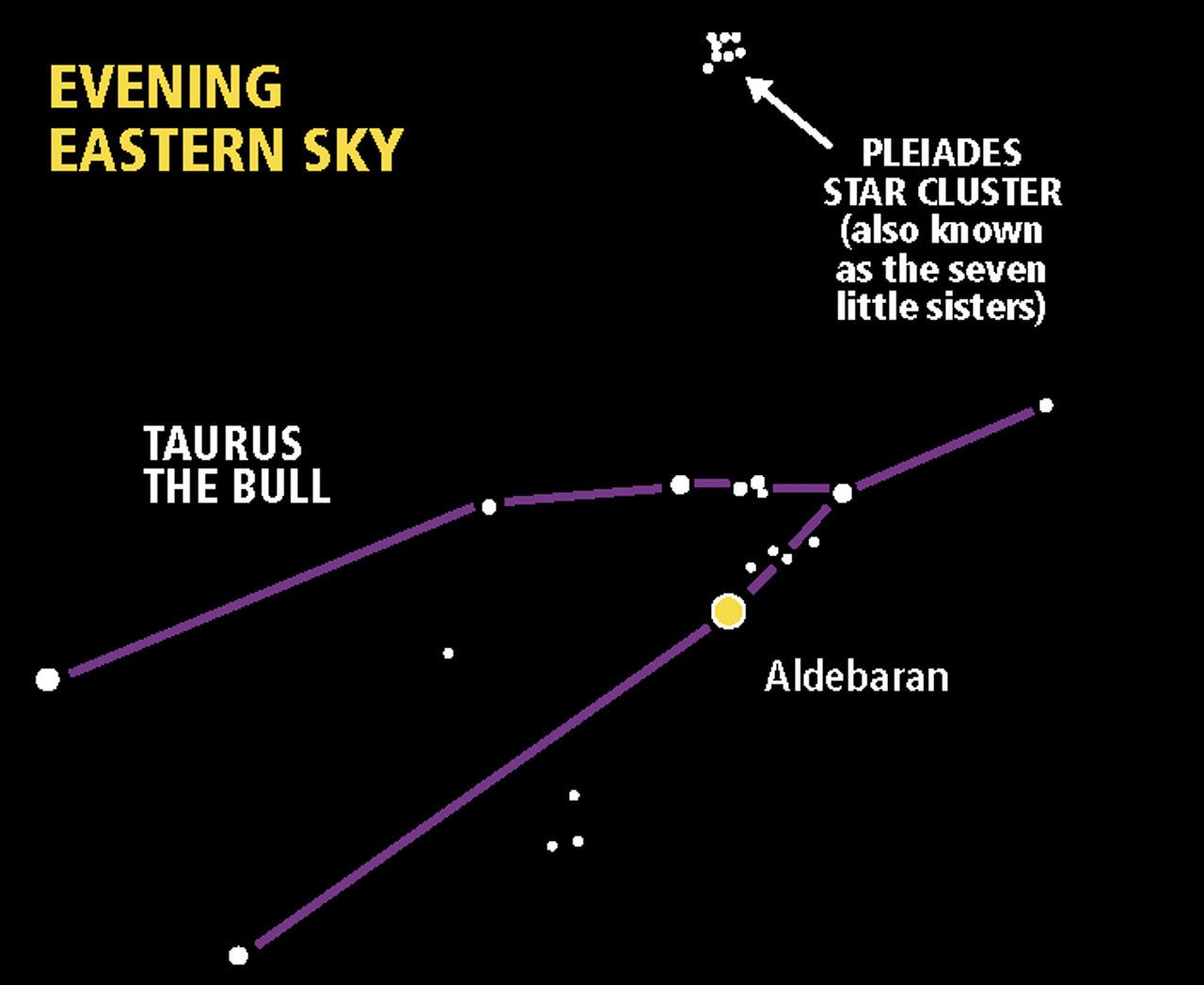The stories of most of the brighter constellations in our night skies involve Greek and Roman mythology, so it’s really difficult to find one that has much to do with Christmas or reindeers.
The only one that even comes close is Monoceros the Unicorn, which is a really faint, deep-track constellation. It actually resembles a TV antenna rising in the eastern sky these mid-December evenings, just behind the majestic, well-known winter constellation Orion the Hunter.
There is a constellation on the rise in the evening this time of year that doesn’t have a red nose like Rudolph, but he does have a bright red eye. It’s Taurus the Bull, prowling around the heavens almost all night.
It’s a small but distinct constellation that’s part of a constellation I call “Orion and his Gang.” This neighborhood of the night sky is also known as the “Winter Circle.” No matter what you call it, it’s by far the most prominent group of bright stars and constellations available through the course of the year.
The best way to find Taurus the Bull is to use the bright star cluster that jumps out at you about halfway from the eastern horizon to the overhead zenith. That’s the Pleiades, a cluster of astronomically young stars only 110 million years old.
The Pleiades are a little over 400 light-years away, with just one light-year equaling nearly 6 trillion miles.
Even if you have to put up with some light pollution, you’ll have no problem seeing the Pleiades. It almost resembles a tiny Big or Little Dipper. It’s also known as the “Seven Little Sisters.”
Just below the Pleiades look for a small and mostly dim arrow of stars pointing to the right. That little arrow is supposed to outline the snout of Taurus the Bull. The one star that isn’t dim on the sideways-oriented face of Taurus is Aldebaran, that marks the ruddy eye of the beast. His other eye isn’t red and is much fainter.
Aldebaran has a reddish hue even to the naked eye, which indicates it’s a relatively cooler star, at about 6,600 degrees. The sun’s surface temperature is about 10,000 degrees.
While it is a cooler star, Aldebaran is much larger than our home star, with a diameter of at least 30 million miles. Our sun isn’t even a million miles in diameter. Aldebaran would be a whole lot brighter in our night sky if it weren’t so far away, at over 65 light-years distant.
If you extend the rungs of the arrow to the left you eventually run into two stars that mark the ends of the Bull’s long, sharp horns. The brighter star on the tip of the upper horn is called Elnath.
Mike Lynch is an amateur astronomer and professional broadcast meteorologist.
Talk to us
> Give us your news tips.
> Send us a letter to the editor.
> More Herald contact information.

























